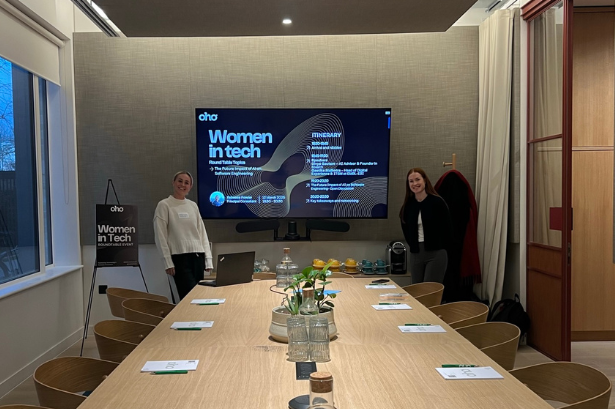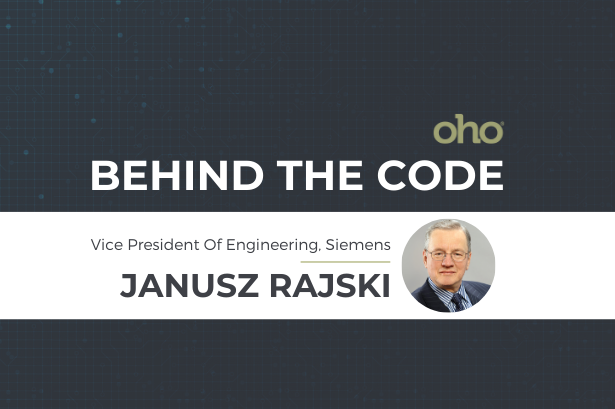The Five Best Tech Rebrands
17 Aug, 20235 mins
To paraphrase Taylor Swift, innovators gonna innovate, and this mantra often extends to tinkering with the names of technology companies themselves.
From Alphabet to X (including a couple of A–Zs), we bring you the five best rebrands that the technology industry has ever seen.
Twitter to X
Love him or hate him, Elon Musk is a man who knows what he wants (unless, of course, what he “wants” is a cage match against Mark Zuckerberg, in which case he needs to check with his mum). Less than a year after buying what users affectionately called “the bird app” for $44bn, Musk declared the blue bird as dead as a dodo.
In its place comes X; the “everything app” set to compete with some of Asia’s biggest names. As a brand, X hails back to the early noughties when Musk founded X.com, an online bank that merged with Peter Thiel’s start-up Confinity to form the company we now know as PayPal. Musk reportedly wanted that business to be known as X.com, but focus groups felt it sounded too much like a porn site.
Source: https://www.theverge.com/2023/7/29/23812780/tweet-change-name-post-x
Undeterred, Musk bought the domain name X.com back from PayPal in 2017, and is finally turning his dreams for the brand into reality. You’ve got to feel for the bird, though.
Facebook to Meta
Musk was not the first to rebrand a well-known social media site; his rival and would-be sparring partner Mark Zuckerberg beat him to that particular punch in October 2021 when he rebranded Facebook as Meta.
The purpose of the renamed company is “to bring the metaverse to life”, according to the statement that accompanied the rebrand, which promised a 3D reimagining of the online social experience. Zuckerberg’s accompanying founder’s letter painted a bold vision of a world where holograms teleported instantly from place to place, promising that the company was, from now on, “metaverse-first, not Facebook-first”.
It’s a popular narrative that the metaverse has failed to reach these promised heights, but it is still early days. Forbes cites research that suggests the metaverse could attract five billion users and be worth $825bn by 2030.
Perhaps, though, the genius of the rebrand lies in the double meaning of Meta: as well as “self-referential”, the word also means “beyond”. In a world where Zuckerberg’s social media empire consists of Instagram and now Threads, not to mention other apps like WhatsApp, the company has certainly moved beyond being just, or even primarily, about Facebook.
Google to Alphabet
Following the trend of achieving scale then rebranding, Google’s founders, Larry Page and Sergey Brin, restructured the company in 2015 to turn it into a holding company named Alphabet. Google, the search engine, became simply the largest of many assets. According to Page’s blog post, G is for Google, Alphabet was created as a collection of companies, in the same way that an alphabet is “a collection of letters that represent language, one of humanity’s most important innovations”.
Barely anyone calls this company Alphabet, though, and you’d be hard-pressed to find a bystander on the street who could picture its logo (essentially just the word ‘Alphabet’ in the Google font, usually in red on a white background). We’ve not set out with the intention of scoring these, but if we had this would be getting a 2/10 — although in Page’s defence, he made it clear at the time that Alphabet wasn’t intended to be a consumer brand.
Incidentally, “Google” itself was a rebrand, from the original name BackRub — a reference to the backlinks the search engine’s crawlers assess to quantify a website’s importance. “Google” was inspired by googol, a number represented by 1 followed by one hundred 0s.
Cadabra to Amazon
Those first three share a common theme: what was once a single-purpose start-up has become a global conglomerate with fingers in many pies (or, in X’s case, the dreams of such). The rebrand has been carried out to reflect the diversified offerings of a bigger, broader business.
Sometimes, however, the original name was just bad. Jeff Bezos’s first effort for his “everything store”, Cadabra, was intended as a reference to “abracadabra”, implying the store was magic. However, Bezos’s lawyer advised that this reference was too obscure. More to the point, it was unnervingly similar on the ear to “cadaver”
Bezos turned to the dictionary in search of fresh inspiration, and near the end of the “A” section stumbled across his winner. It’s said that his belief that the Amazon was the world’s largest river supported the decision; if only Jeff had had the patience to get to “N”, then we might even now be streaming content through Nile Video.
The initial error is surprising from a man like Bezos, who is famous for his branding nouse; he reportedly loved Amazon’s smile logo so much that he declared “anyone who doesn’t like this logo won’t like puppies”. Interestingly, like Alphabet, the smile logo (which links the a and the z in Amazon) alludes to the A–Z range of products that Amazon offers.
Computing-Tabulating-Recording Company to IBM
Talking of companies that started out with bad names, a special mention goes to IBM, or the Computing-Tabulating-Recording Company, as it once was.
Computing-Tabulating-Recording Company (CTR to keep it concise) was itself formed via the merger of the equally snappy International Time Recording Company, the Computing Scale Company and the Tabulating Machine Company in 1911. Marketing has clearly come a long way in the century since.
In all fairness, IBM is an acronym for International Business Machine. While perhaps a little more evocative, this is barely more concise than Computing-Tabulating-Recording Company, so perhaps we should be comparing IBM and CTR?
Inevitably, the most innovative companies will evolve continuously over time, and their name and brands will follow suit. The results will often split the crowd, but hey, what’s in a name?
Oho
/ (əʊˈhəʊ) /
interjection
an exclamation expressing surprise, exultation or delight
Find out how Oho’s offering could surprise and delight you here.



